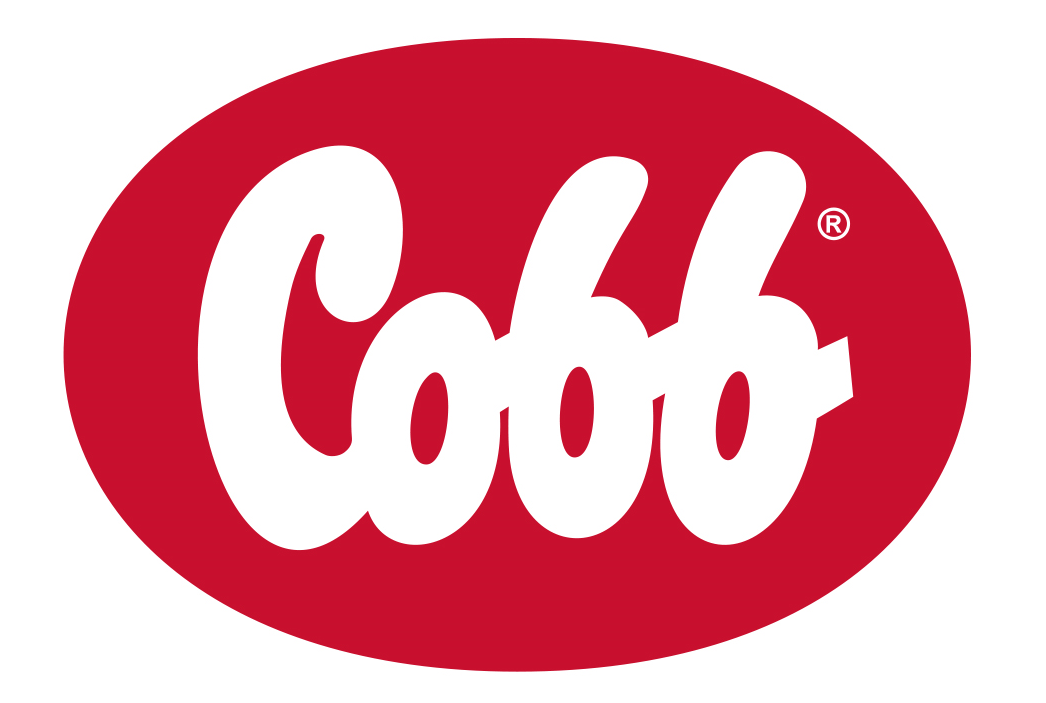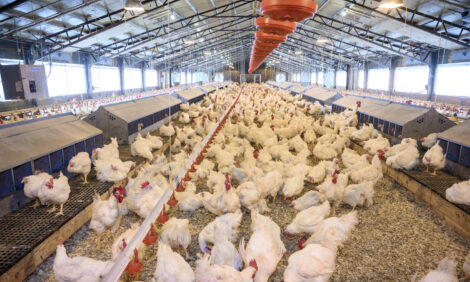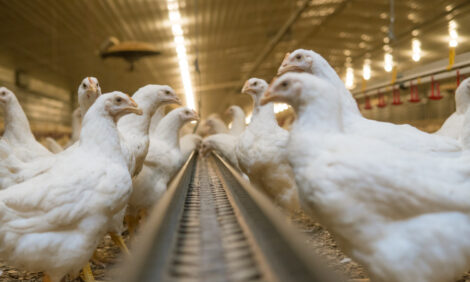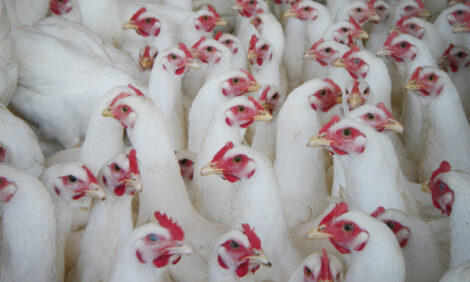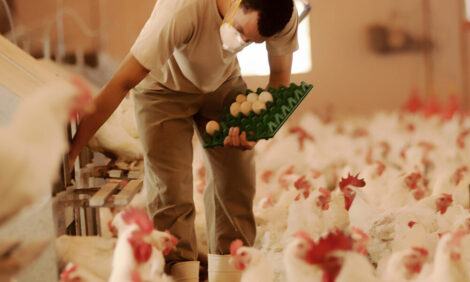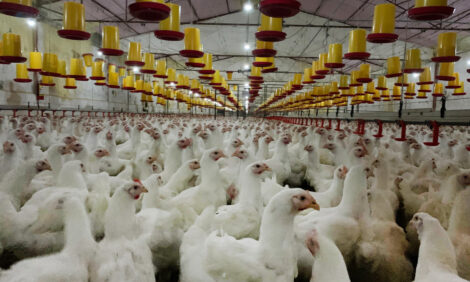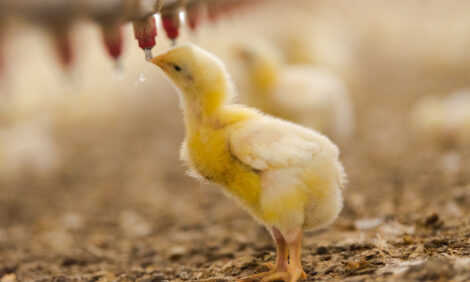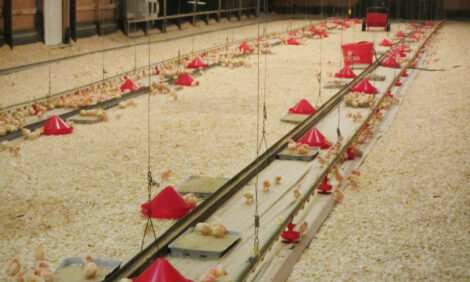



Cobb Breeder Management Guide: Spiking males during production
Learn more about spiking methodsPart of Series:
< Previous Article in Series Next Article in Series >
Editor's note: This article is an excerpt from the Cobb Breeder Management Guide and additional articles will follow. The Guide was designed to highlight critical factors that are most likely to influence flock performance. The management recommendations discussed were developed specifically for Cobb products. The recommendations are intended as a reference and supplement to your own flock management skills so that you can apply your knowledge and judgement to obtain consistently good results with the Cobb family of products. To read or download the complete Guide or to view Cobb's other management guides, click here.
Spiking is the addition of young broiler breeder males into an older primary flock to compensate for the decline in fertility that generally occurs post 45 weeks of age. Flock data has repeatedly shown that having a spiking program in place prior to fertility decrease produces the best results. Many times, historical flock data can help guide when a flock should be spiked. For optimal results, the hen flock should be between 35 to 40 weeks of age and spiking can be done with normally scheduled management procedures. Spiking once in the life of the flock is normally sufficient. Flocks spiked twice in an 8 to 10-week interval also produce good results but is dependent on the quality of the primary males. Spiking is usually not economical when the females in the flock are beyond 55 weeks of age.
Incorrect spiking can result in a drop in fertility and hatchability as males attempt to establish a new social hierarchy. Poor spiking management procedures can result in a total loss of the spiked males several weeks after spiking. Carefully record removal of primary males and monitor the remaining primary male ratio so that spike males can then be added at the appropriate time. It is a good practice to eliminate males every week that are unable to mate and keep only the highly productive and active males in the flock.
Spiking can compensate for fertility declines associated with:
- Decline in mating interest – common after 35 to 40 weeks
- Reduction in sperm quality - common after 55 weeks
- Lower mating efficiency due to poorly managed males in poor physical condition. On a daily basis identify and remove birds with mobility issues. Maintain good quality primary males by culling males weekly that are not able to mate. The best results are being achieved when comprehensive male selections are done at 25, 35, 45 and 55 weeks of age.
- Excessive male mortality resulting in a reduced male to female ratio
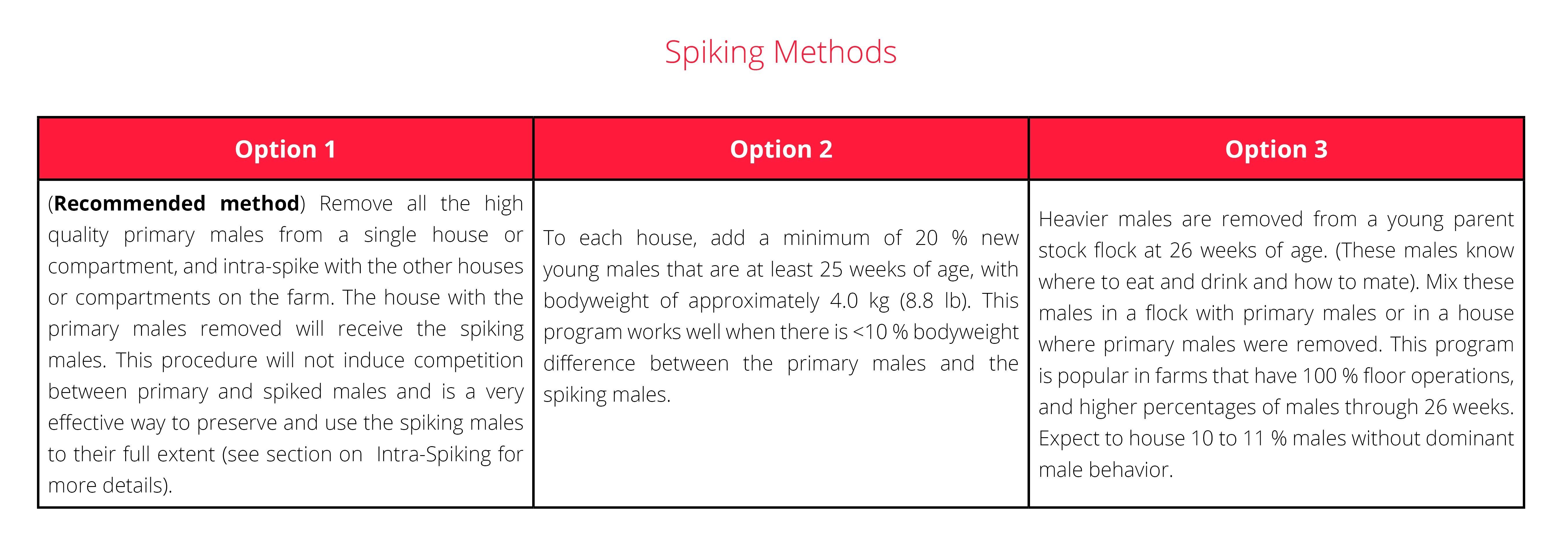
Important criteria for effective spiking outcomes
- Spike males may be transferred to the same facility as the primary males but housed in a pen (3 birds per m2;; 3.6 ft2 per bird) separate from the flock. Alternatively, use a designated house for rearing spike males to be introduced to 35 to 40-week old hen flocks.
- When using separate spike male rearing farms, the spiking farms will receive a fixed number of male deliveries for a specific spiking program.
- Spike with a minimum of 20 % additional males to increase the male ratio back to 9 % if the primary male numbers have been reduced through culling.
- In production houses without slats, house 9 to 10 % males at transfer. Allow the male to female ratio to decrease to 7.5 % by 40 weeks of age before spiking back to 9 %.
- Spike males back to 9 % in slatted production houses when the male ratio goes below 7 %.
- Spiking with an insufficient number of males is generally ineffective due to primary male dominance resulting in high mortality of spike males.
- Spiked males should always be good quality and free of physical defects. It is common practice to use a heavier bodyweight standard in males if spiking programs will be used. The bodyweight differential between spike males and primary males should be as low as possible to ensure a high success rate.
- If early spiking is practiced (30 to 32 weeks), then fewer males (7 %) can be placed at 21 to 22 weeks. Over time, more males can be added to increase the male ratio to 9 to 10 %. This decision must be based on housing conditions and levels of dominant male behavior. This method will improve female receptivity and mixing of sexes.
- A slight feed increase just after spiking 2 to 3 g/bird/day (0.44 to 0.66 lb/100/day) should be beneficial since spiking significantly increases male mating activity.
- Keeping males in reserve in good condition is challenging. After 23 weeks, the longer they are without females, males will begin to deteriorate. In the holding pens, maintain plenty of drinkers, feeders and barrier enrichments.
Biosecure spiking
- Biosecurity risk is the main reason some producers choose not to spike.
- Males should come from a single source flock.
- The source flock should be tested using a PCR assay for Mycoplasma and other diseases as appropriate (Avian Influenza, TRT and environmental Salmonella) 5 to 7 days before transfer.
- Check for parasites (worms and mites) and any signs of disease (fowl cholera).
- In the case of a positive or suspect result, the move should be delayed.
- Plan the time and pathway of the move to minimize contact with other poultry.
- Use an enclosed vehicle to transport birds if possible.
Expected results of spiking
- Peak fertility response should be seen approximately 2 to 3 weeks after spiking. Generally, spiking should result in a 2 to 3 % increase in overall hatchability.
- Spiking stimulates mating activity significantly in the primary males and lasts about 6 to 8 weeks.
- Male dominance and mating interference usually increases for 2 weeks after the introduction of young spike males. Male mortality can increase slightly but not dramatically if the males have the correct bodyweight and condition when added.
- Spiking does not solve pre-existing problems such as over weight primary males, and poor mixing.
- Relying on a spiking program could result in poorly managed primary males, which are essentially the most important.
Intra-spiking
- Intra-spiking involves the exchange of 25 to 30 % of primary males between houses on the same farm, without importing any new young males, to stimulate mating. As with spiking, intra-spiking has better results when done early in the production cycle (<45 weeks). Intra-spiking between 40 and 48 weeks always produces the best results. Mating activity should increase very significantly after intra-spiking and last between 6 and 8 weeks.
- An advantage is that the males exchanged are already trained in mating and usually have similar weight and maturity as the original males, improving their chances to compete successfully.
- Intra-spiking increases male dominant behavior for two weeks after mixing as the social order is reestablished. There are usually no problems with male or female mortality.
- Hatchability does not increase dramatically after intra-spiking, but the persistency of hatchability is improved. With a double intra-spiking procedure, expect an increase between 1 and 1.5 % in the overall hatchability of the flock.
- Intra-spiking is inexpensive, easy-to-practice and, most importantly, rarely presents a biosecurity risk.
The graph below illustrates the beneficial effects of flock spiking on percentage of hatchability to 60 weeks of age. For this example, a flock spiked at 40 weeks and a flock intra-spiked at 40 and 48 weeks of age are compared to a non-spiked flock. The average flock hatchability for the non-spiked flock was 84.5 % while the intra-spiked flock was 85.8 % and the flock spiked at 40 weeks was highest at 87.4 %.
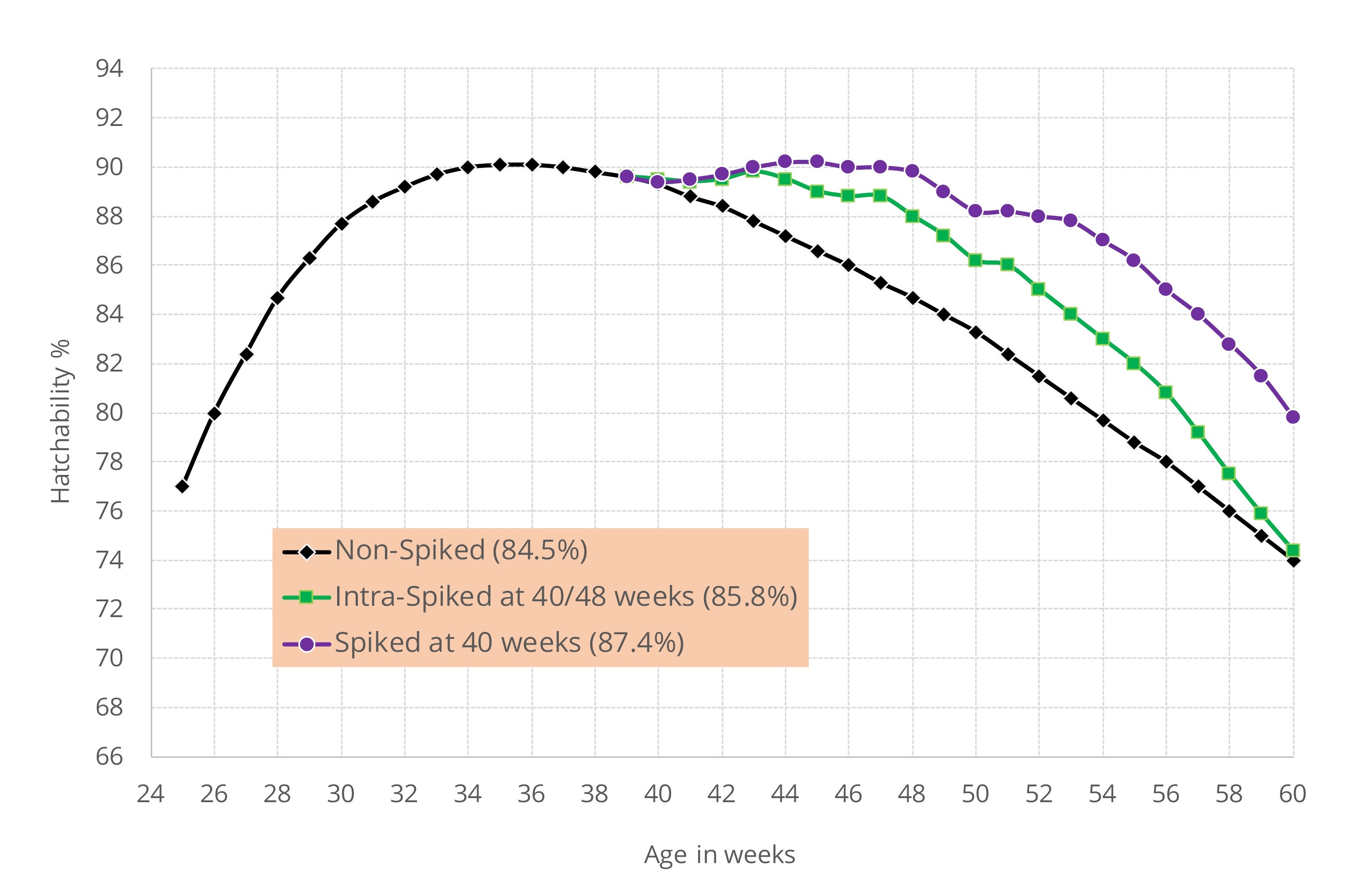
To optimize male comfort, behavior and quality during spikes, these recommendations can be considered when planning the transfer:
- During winter (cold months): if using open-sided trailers, move males during daylight hours with appropriate boards/tarps to prevent exposure to extreme cold weather.
- During summer (hotter months): move males early in the morning or late evening to prevent thermal stress.
- If possible, move males in an enclosed trailer to minimize thermal discomfort and to optimize the ability to transfer the males in late evening or early morning when the rest of the flock is likely resting.
Take care when handling the spike males. Staff should handle a maximum of two birds per hand to reduce injury potential to the birds. Ideally, males should be handled by both wings or both legs (depending on welfare guidelines or codes of practice) and should be placed gently on the litter in the new house.
Before the transfer, consider using a food-based dye to mark the new males (intra-spiking or full-spiking). This practice will enable farm staff to easily identify the new males within the breeder flock and to verify that males find water and feed, are adjusting to the house and are mixing with the hens. After 3 to 5 weeks, the dye will fade and males should be fully acclimated to the new house.







